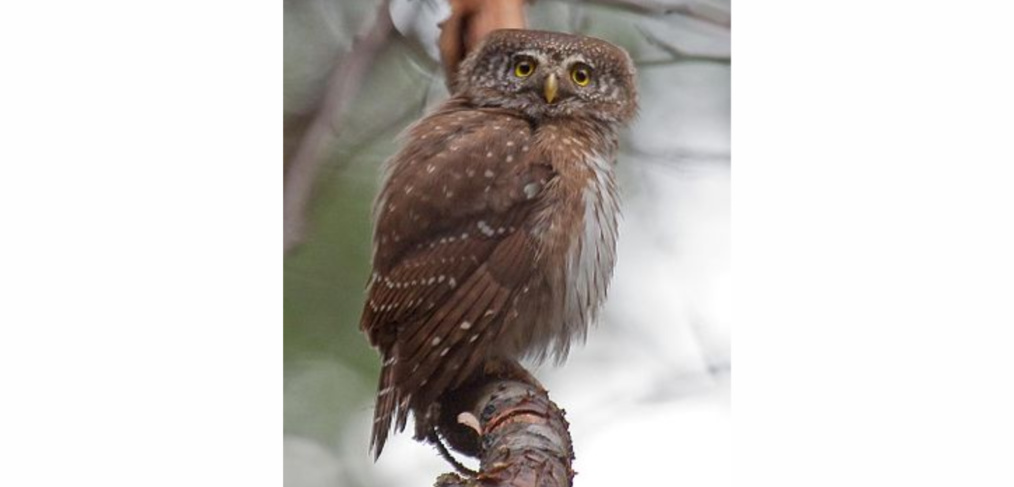
species of the week #16 (KW 19-2020)
Pygmy owls are record holders: as the smallest European owl species, they are no larger than a star at only about 15 to 19 cm and reach a weight of just 60 to 80 g. Less than a bar of chocolate. Their reddish to pale dark brown plumage is characterised by small light spots and a light belly with dark longitudinal stripes.
| Residual occurrence | Extremely rare |
| Distribution status | Palatinate Forest near Kaiserslautern, individual animals in Bienwald, Eifel, Westerwald |
| Last sighting in Rheinland-Pfalz | current |
| Habitat | Diverse, structurally rich forests with old wood |
| Threat of | clear-cutting, removal of deadwood, road construction |
The special thing: Pygmy owls have eyes in the back of the head. This is at least what the “fake face” looks like, a feather drawing that is supposed to scare off predators (pine martens, sparrow hawks, hawks, larger owls). The “real” eyes are small and yellow and sit naturally at the front of the flat, broad head.
The Eurasian Pygmy Owl needs a varied forest structure with open spaces, its territory size is only one square kilometre. In resting periods, the Eurasian Pygmy Owl likes to retreat into denser corners. Solitary trees as well as old and dead wood in loose groups are important components of the habitat, for breeding the owls need old wood rich in caves. Artificial nesting aids are seldom accepted, but the creation and maintenance of suitable biotopes is necessary. The renaturation of natural moorland sites also contributes to this.
Politically necessary:
– Near-natural forest management
– Renaturation of wetlands
– No cutting up of semi-natural forests through road construction
